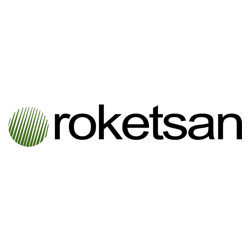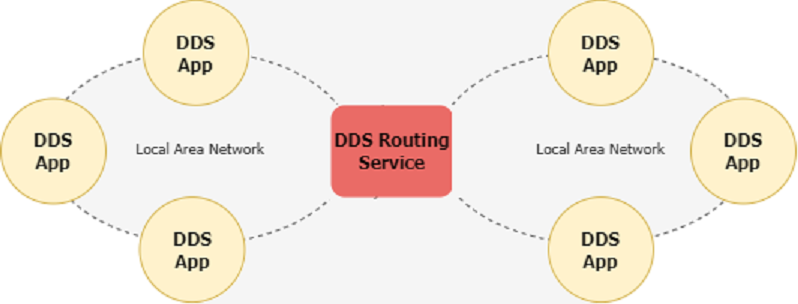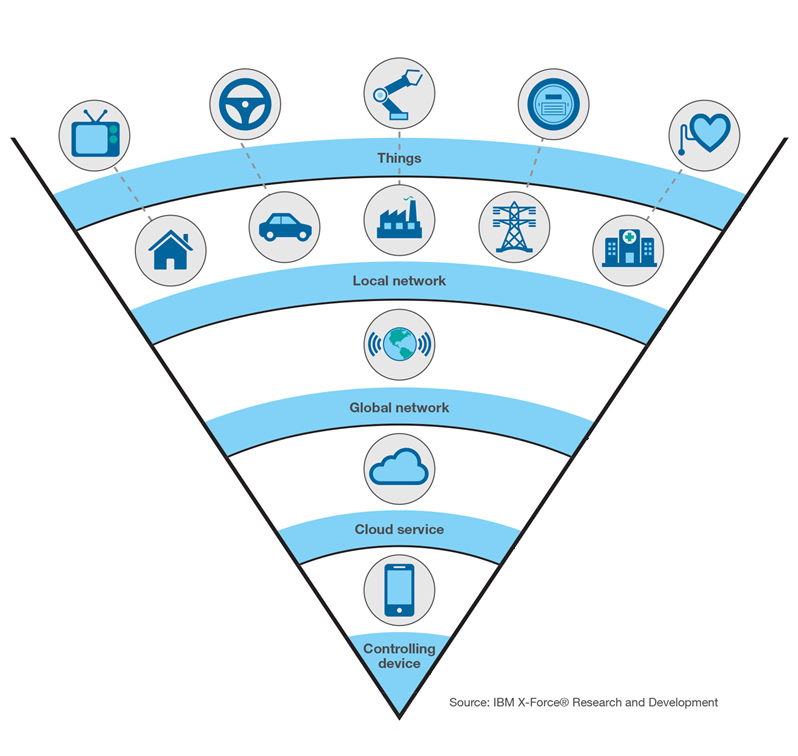MilDDS is a middleware software providing data centric publish-subscribe mechanism for distributed applications.

BENEFITS
Mil-DDS CORE
DDS (Data Distribution Service) is an open middleware protocol and API standard for data-centric connectivity and publish/subscribe based communication standardized by OMG (Object Management Group). It integrates the components of a system together, providing low-latency data-connectivity, extreme reliability, and a scalable architecture that mission-critical and business-critical applications require
Why ?
With the growth of systems, the need for data communication between devices and systems has become a serious
problem. Delivery of data with low latency, reliability, scalability, maintainability, reusability, integrity and
interoperability are the troubles of these systems. Middleware that addresses these issues is required for the
communication of device-to-device, device-to-system and integration of system-of-systems.
Mil-DDS CORE has DDS middleware and powerful tools that reduce the cost of developing and integrating large-scale
systems. It promotes scalability and loose-coupling in time and space enabling publishers and subscribers to attend
the DDS Global Data Space at any time and location. Participants communicate their interests in this space
asynchronously in terms of topics.
Key Features
Interoperability enables different DDS vendor applications to work together.
Decentralized architecture provides peer-to-peer communication to applications.
- No brokers or mediators
- Low latency
- High throughput
- Scalability
- No single point of failure
Data centric integration decouples applications.
Middleware is aware of data content and manages its
lifecycle.
- Loose-coupling
- Content filtering
- Data lifecycle management
- Type-safety
- One component at a time integration
Dynamic discovery eliminates deployment configuration and middleware automatically discovers producer and consumer applications.
- Plug and Play
- No deployment configuration
- Automatically match producers and consumers
Quality of Services allows the application developer to control the behavior of middleware communication.
Mil-DDS CORE provides rich set of quality of services to configure volatility, delivery, redundancy and transportation of data.
- Reliability, Durability, Deadline, Priority, Ownership…
High Performance data transfer supplied by Mil-DDS via reliable multicast. It also follows no dynamic resource allocation after initialization concept for better memory management.
Technical Features
Followed Standards and Profiles
- Data Distribution Service (DDS) v1.4
- Minimum Profile
- Persistence Profile
- Ownership Profile
- Content-Subscription Profile
- DDS Interoperability Wire Protocol (DDSI-RTPS) v2.1
- Extensible and Dynamic Topic Types for DDS (DDS-XTYPES) v1.1
- Programming Interface
- Network Interoperability
Transports
- UDP, TCP, Shared Memory
Operating Systems
- Linux, Windows, VxWorks, Embedded Linux
 |
 |
Processor Families
- x86, x64, ARM, PowerPC
 |
 |
 |
Programming Languages
- C++, C#, Java
 |
 |
 |
Tools
DDS Modeler helps application developers to design data model and applications for data-centric architectures, and generate code in C++, Java and C#. It isolates application programmers from details of DDS API thus enables faster code development.
DDS Spy is a powerful tool to monitor, analyze, debug and test DDS systems. It listens network and displays DDS related entity information and middleware data. In addition, DDSSpy also injects middleware data to the system for integration and test purposes.
DDS Monitor allows developers to diagnose any run-time conflicts and problems.
DDS Network Analyzer measures the network bandwidth and diagnoses network problems.
Mil-DDS EE
Mil-DDS EE offers the existing DDS capabilities and Quality of Services to the service of enterprise applications. It enables these wide are aapplications to access to DDS Global Data Space. Mil-DDS EE transfers real-time data securely against internal and external threats. It integrates different systems and devices by supporting latest web technologies.
Why ?
It has become a necessity for enterprise systems to operate on a wide network and to integrate with other existing systems. It is not enough for systems to work alone, they must be able to exchange data with other systems.
Nowadays, working together with systems (Military, Civil, Legacyetc.) whichare developed using different technologies on different platforms, has vital importance in many cases.
Key Features
- Wide area network (WAN)
- Security
- Enterprise integration patterns
- HTTP/REST and WebSocket transport
- Containerization (Docker)
- Bridging different systems
Technical Features
Followed Standards and Profiles
- Web-Enabled DDS (DDS-WEB) v1.0
- REST
- Websocket
- TCP/IPv1.0
Transports
- HTTP/REST, Web Socket, TCP
Operating Systems
- Linux, Windows
 |
 |
Programming Languages
- Javascript, Typescript
 |
 |
Tools
WebDDSService makes DDS API accessible as a web service, a REST or Web Socket resources. Exposing access via these web friendly protocols allow applications built on various technology stacks (e.g. Java Script, Python, PHP, Perl, etc.) to communicate with native DDS applications.
WebDDSJSCommunicator is a typescript/javascript library that simplifies WebDDSService communication.
WebDDSSpy is a special web client that communicates with WebDDSService. It visualizes DDS data traffic. It runs on web browsers, without requiring any configuration. It can be used to monitor and inject data to DDS network using Web DDSService.
DDSCamel component aims to solve the problem of integrating various protocols, formats and QoSes. It provides an implementation of the Apache Camel component interface, a DDS endpoint providing access to DDS systems via Apache Camel.
DDSRoutingService is a solution for integrating disparate and geographically dispersed systems. It scales DDS applications across domains, LANs and WANs, including firewall and NAT traversal. DDSRoutingService also supports DDS-to-DDS bridging, and it can be extended to make transformations in the data along the way. This allows unmodified DDS applications to communicate even if they were developed using incompatible interface definitions.
Mil-DDS RT
Mil-DDS RT is a deterministic data centric publish/subscribe middleware for real-time and safety critical systems. Discovery and read/write topics are optimized for deterministic behavior. Mil-DDS RT uses static/semi-static discovery to explore participants, data writers and data readers in the environment. Discovery phase is done during the initialization of the applications. After that, applications can read/write topics of interest. Mil-DDS RT guarantees the completion of the discovery and read/write operations within a certain time. It makes topic operations via transport plugin. Mil-DDS RT implementation supports UDP/IP and ARINC-653 transport plugins.
Technical Features
Key Features
- Deterministicbe havior
- Safety critical
- DO-178C
- (DAL A) Certifiable
- Static/Semi-static discovery
- FACE compliant
- Small memory footprint
- UDP multicast and ARINC-653 transports
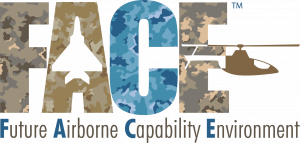 |
Transports
- UDP, ARINC-653
Programming Languages
- C, C++
Operating Systems
- Tübitak GzIS, VxWorks-653, RTOS
 |
 |
 |

Tools
DDSModeler-RT helps real-time application developers to design data model and applications for data-centric architectures, and generate code in C and C++. It abstracts application programmers from details of DDS-RTAPI thus enables faster code development.
DDSSpy-RT is a power ful tool to monitor, analyze, debug and test DDS-RT systems. It listens the network and displays DDS-RT related entity information and middleware data from Windows or Linux based computer. In addition, DDSSpy-RT also injects middleware data to the system for integration and test purposes.
Mil-DDS IIOT
Data Distribution Service (DDS) is a family of standards from the Object Management Group (OMG) that provide connectivity, interoperability and portability for Industrial Internet, cyber-physical, and mission-critical applications.
Why ?
Time Sensitive Networking (TSN) is a collection of standards developed by the TSN task group oft he IEEE802.1 working group. Their purpose is to enable deterministic, highly reliable communication on standard Ethernet. With its support for different types of quality of service, a single TSN network infrastructure can be used to communicate mission critical data with real-time delivery requirements side-by-side with non-critical data.
There are several reasons why DDS and TSN are expected to play well together. Most fundamentally, both technologies provide one-to-many communications that support different levels of quality of service for different streams of data. Consequently, some of the basic DDS concepts have similar counterparts in TSN.
Mil-DDS IOT
Mil-DDS IOT is the right choice for systems with diverse communication needs enabling network interoperability for connected machines, enterprise systems, and mobile devices. It is a proven data connectivity standard for IoT (Internet of Things) and the unique paradigm to meet the requirements of device-to-device, device-to-system communication patterns.
Mil-DDS IOT reduces modeling, development, integration, testing and maintenance costs to realize IoT systems built up from systems ranging from edge to cloud.
Technical Features
Key Features
- Low computational power
- Low bandwidth
- Small memory footprint
- Intermittent connectivity
Followed Standards and Profiles
- DDS fore Xtremely Resource Constrained Environments (DDS-XRCE) v1.0
Transports
- UDP, TCP
Operating Systems
- Yocto Linux, Windows Embedded, Raspberry PI
 |
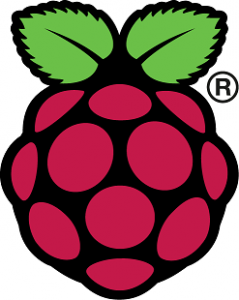 |
 |
Programming Languages
- C, C++
 |
 |
Tools
XRCE Agent’s main purpose is to establish and maintain the presence of the XRCE Client in the DDS data-space. The agent uses XRCE protocol to communicate with the clients and bridges global data space with DDS protocol.
XRCE Client is an application, which runs on IoT devices and communicates with XRCE Agent.
Mil-DDS EXTRAS
DDS Security Plugin
DDS Security Plugin provides secure access to the DDS Global Data Space. Applications that use DDS must first be authenticated, so that the identity of the application (and potentially the user that interacts with it) can be established. Once authentication has been obtained, the next step is to enforce access control decisions that determine whether the application is allowed to perform specific actions. Enforcement of access control shall be supported by cryptographic techniques so that information confidentiality and integrity can be maintained, which in turn requires an infrastructure to manage and distribute the necessary cryptographic keys.
Followed Standardsand Profiles
•DDS Security (DDS-SEC) v1.1
DDS 2 JSON
The flood of machine-generated data from IoT is one of the primary drivers behind the accelerating adoption of non-relational systems. NoSQL databases are both flexible and scalable enough to keep pace with the explosion in connected devices. Complex data types typicalin IoT applications can be modeled and represented more efficiently using JSON (Java Script Object Notation) documents, rather than SQL tables.
Record Replay
It is possible to acquire large volumes of real-time data from sensors and devices, convert to JSON format and store it into a time series document in a MongoDB collection. Recorded data is immediately available for replay, querying, or conversion to commonly accepted formats for export to data analysis tools. For are play of the record, DDS domain, topics, replay speed and time interval can be configured. It becomes useful in project development, testing and system integration as well as in deployed systems.
Discovery Plugins
Due to its nature, DDS does not require configuration and dynamically discovers the other applications. This feature can generate network traffic while providing flexibility. In environments, which require determinism or has low bandwidth, static/semi-static discovery plugins can be used to reduce network traffic. By these plugins, DDS performs discovery process with the files, which are generated at configuration time.
Mil-DDS REFERENCES
Mil-DDS is a proven technology and has been backbone to a wide variety of projects in both Turkish national and the international markets for over ten years.
MilSOFT is willing to work with partners to develop large scale system solutions that can be applied to Command & Control Systems, Smart Grid, Smart City, Smart Transportation etc.
MilSOFT
- Combat Management Systems
- Tactical Data Link Processor
- Simulation Systems
- Scalable C2 and Integrated C2 Solutions
- Coastal Surveillance Systems
- Image Exploitation Systems








